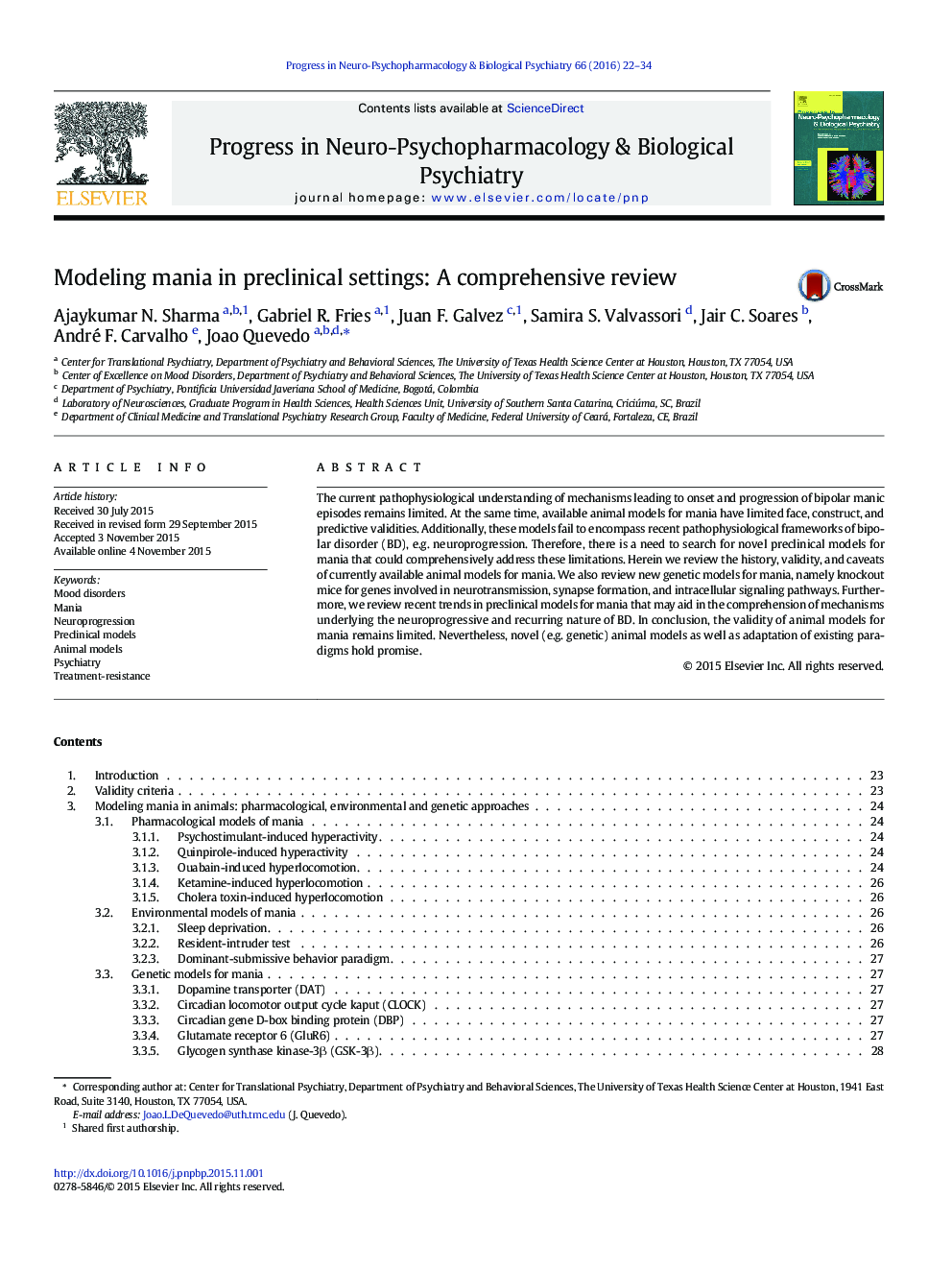| Article ID | Journal | Published Year | Pages | File Type |
|---|---|---|---|---|
| 5844253 | Progress in Neuro-Psychopharmacology and Biological Psychiatry | 2016 | 13 Pages |
Abstract
The current pathophysiological understanding of mechanisms leading to onset and progression of bipolar manic episodes remains limited. At the same time, available animal models for mania have limited face, construct, and predictive validities. Additionally, these models fail to encompass recent pathophysiological frameworks of bipolar disorder (BD), e.g. neuroprogression. Therefore, there is a need to search for novel preclinical models for mania that could comprehensively address these limitations. Herein we review the history, validity, and caveats of currently available animal models for mania. We also review new genetic models for mania, namely knockout mice for genes involved in neurotransmission, synapse formation, and intracellular signaling pathways. Furthermore, we review recent trends in preclinical models for mania that may aid in the comprehension of mechanisms underlying the neuroprogressive and recurring nature of BD. In conclusion, the validity of animal models for mania remains limited. Nevertheless, novel (e.g. genetic) animal models as well as adaptation of existing paradigms hold promise.
Keywords
Related Topics
Life Sciences
Neuroscience
Biological Psychiatry
Authors
Ajaykumar N. Sharma, Gabriel R. Fries, Juan F. Galvez, Samira S. Valvassori, Jair C. Soares, André F. Carvalho, Joao Quevedo,
